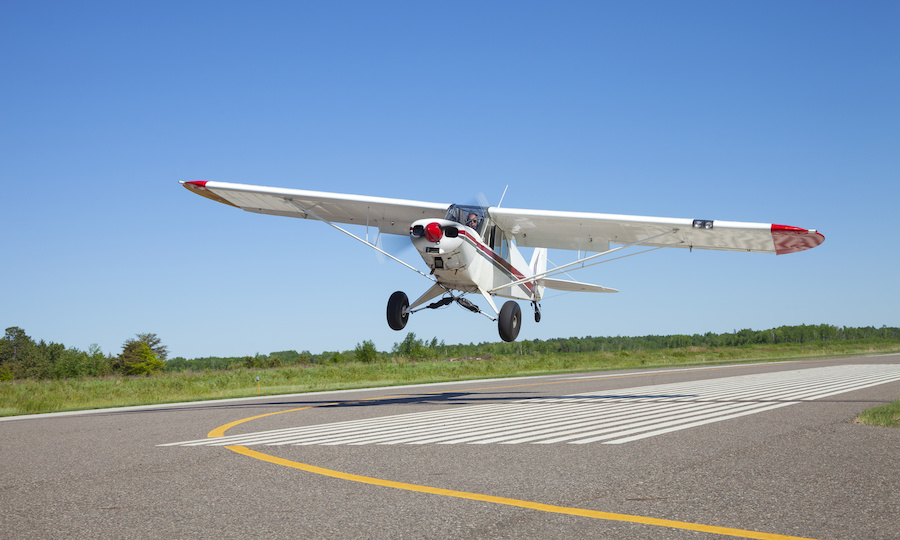Aircraft wings are a feat of modern engineering. Without them, flight simply couldn’t take place. There are actually many parts to a wing. Different aircraft have different shapes and styles of the wing, but the general principle is the same. Today we will talk you through parts of a wing and give a detailed explanation of some technical terms too!
A Few Technical Terms
Before we tell you all about the different parts of a wing, we need to get comfortable and familiar with a few terms that will aid your understanding.
There are several naming conventions used when discussing aircraft wings. Here are some of the most often used terms: –
Wing Tips
Let’s start outside the aircraft, facing the airplane sideways at the very end of the wing. This section is called the wingtip. The wingtips are the furthest most point of the wing from the aircraft’s body.
Span
The wingspan of an aircraft is simply a measure of how long the wings are. The measurement is taken from the end of one wingtip to the end of the other wingtip.
Camber
While we are standing at the wingtip, it is worth discussing the wing camber.
When you stand sideways on to most aircraft wings, you’ll notice that the upper surface is curved. The depth of the curve is called camber. A greater camber means a more pronounced curve in the wing’s top surface.
Leading Edge
We’ll now walk to the front of the aircraft, so it is pointing nose towards us. When viewing the wings from this angle, we can see the front of the wings. This section is called the leading edge. The leading edge is always the forward part of the wing.
Trailing-Edge
If we stand at the rear of the aircraft, we can see the backs of the wings. These are called the trailing edge. The trailing edges of an airplane wing are usually very thin compared to the leading edge.
Chord Line
The chord line is a technical term used mostly by airplane engineers and wing designers, but it pays to know it.
Because the wing is curved (due to its camber) and can vary in thickness, we need a standard datum to measure its position when presented to the oncoming airflow.
This datum is called the chord line. The chord line is simply a straight line, drawn from the leading edge to the trailing edge, intersecting the wing in cross-section.
Wing Root
The wing root is where the wing meets the aircraft’s fuselage. The wing root is nearly always the thickest part of the wing.
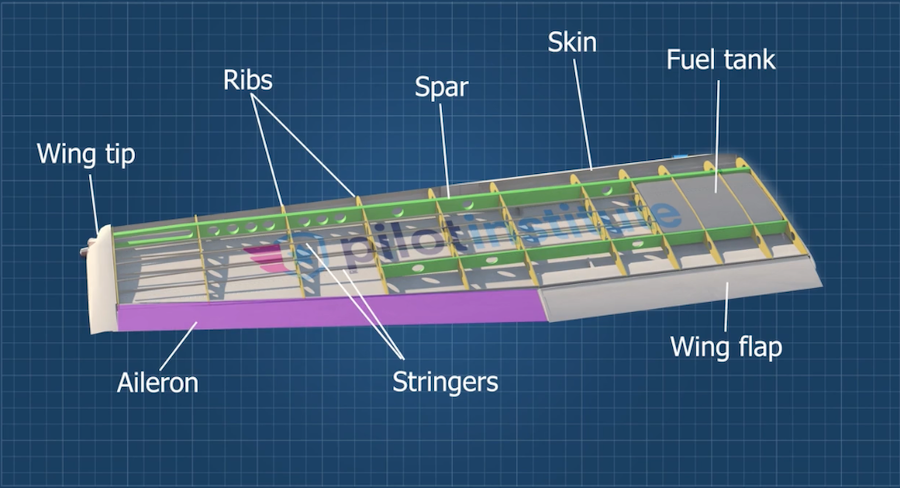
What are the Main Structural Components of a Wing?
Some structural components within the wing are worth discussing.
Spar
The wing spar is crucial to the structural integrity of the wing. You normally won’t see the spar, as it forms the internal ‘backbone’ of an airplane wing. They are usually extremely strong, and in some cases, are designed to flex to allow for a smoother ride in turbulence.
The extent of this flex is phenomenal. Here’s a quick video showing how far the spar on a commercial jet airliner can flex: –
Fairing
Fairings are aerodynamic covers placed over certain parts of the wing to reduce drag and increase efficiency. You’ll tend to find fairings are fitted over flap control actuators and the wing roots.
Fuel Tanks
A large proportion of aircraft actually store fuel in the wings. The volume inside each wing is surprisingly spacious, and as a result, you can fit plenty of fuel in there.
Aircraft like the Airbus A380 can store over 80,000 gallons of fuel!
Flight Control Surfaces
If you have ever sat over a wing during a flight, you’ll have noticed a fair amount of movement of different panels and parts of the wing. Each of these moving parts has a name and performs a specific function. They are called flight control surfaces.
Here’s a great video showing you all of the parts of a wing in action: –
Here are the names of the parts of the wing you have seen above and what they do.
Ailerons
What are Ailerons:
Nearly all winged aircraft will have ailerons. These are the small rectangular sections that are located near the wingtips on the trailing edge of the wing.
Ailerons are used to control the aircraft in a roll.
How Ailerons Work:
Ailerons move up and down to change the chord line at the end of each wing. When the cord line is altered, this changes the airflow going over the wing. When an aileron is up, its corresponding wing is pulled down.
While you might not see it, on the opposite wing, the reverse is happening. The aileron moves down, causing that wing to move up.
A combination of the above creates a rolling moment.
Spoilers
What are Spoilers?
Spoilers are normally found on larger aircraft. These are large panels, normally located in the middle of the wing’s upper surface or towards the trailing edge.
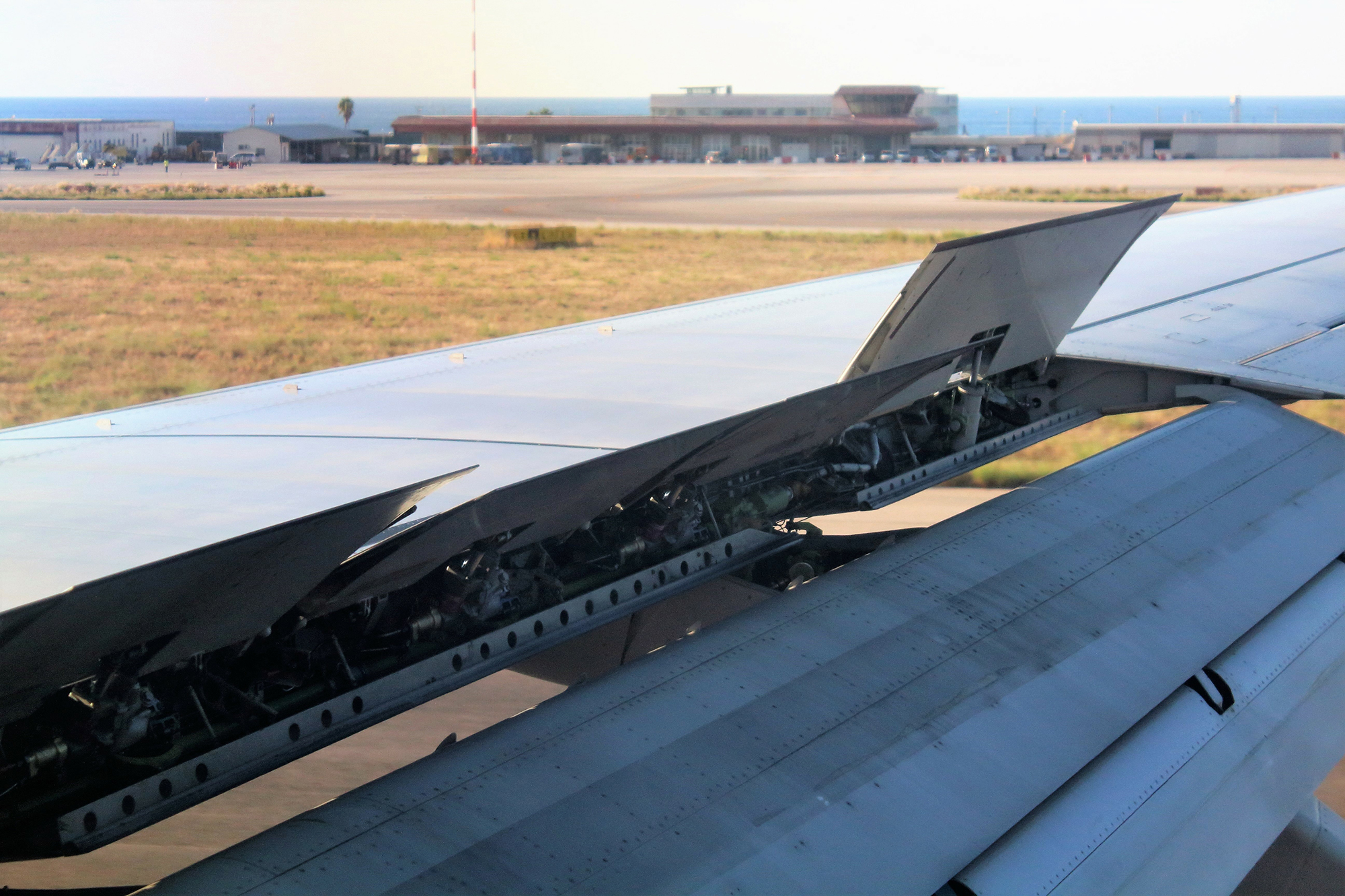
Spoilers have a few functions that make them slightly different from ailerons: –
- Roll spoilers: Used to control the aircraft in roll
- Speed brakes: Used to slow the aircraft down or descend more rapidly
- Ground spoilers: Used to ensure the aircraft wing produces minimal lift at touchdown on landing.
How Spoilers Work:
Spoilers, unlike other flight controls, don’t produce lift. Instead, they prevent or ‘spoil’ it. Hence the name.
Spoilers increase drag over the wing. If you are familiar with flight principles, you’ll know that drag makes level flight harder. If you increase the drag on only one wing, it will descend, creating a rolling motion.
Unlike aileron, spoilers only move on the wing in the direction in which the aircraft is turning.
Speed brakes push all of these panels out into the airflow. As a result, the drag will slow the aircraft or allow it to descend at speed.
When the aircraft touches down, you may see the spoilers fully deploy. This kills all of the lift created by the wings and ensures that all of the aircraft’s weight is on the wheels, shortening stopping distance.
Flaps
What are Flaps on Aircraft?
Flaps are large panels located on the trailing edge of the wing that is used to increase the size and shape of the wing, as well as the chord line. They enable the aircraft to fly slower and give the pilots a better view for landing. They are also used for takeoff.
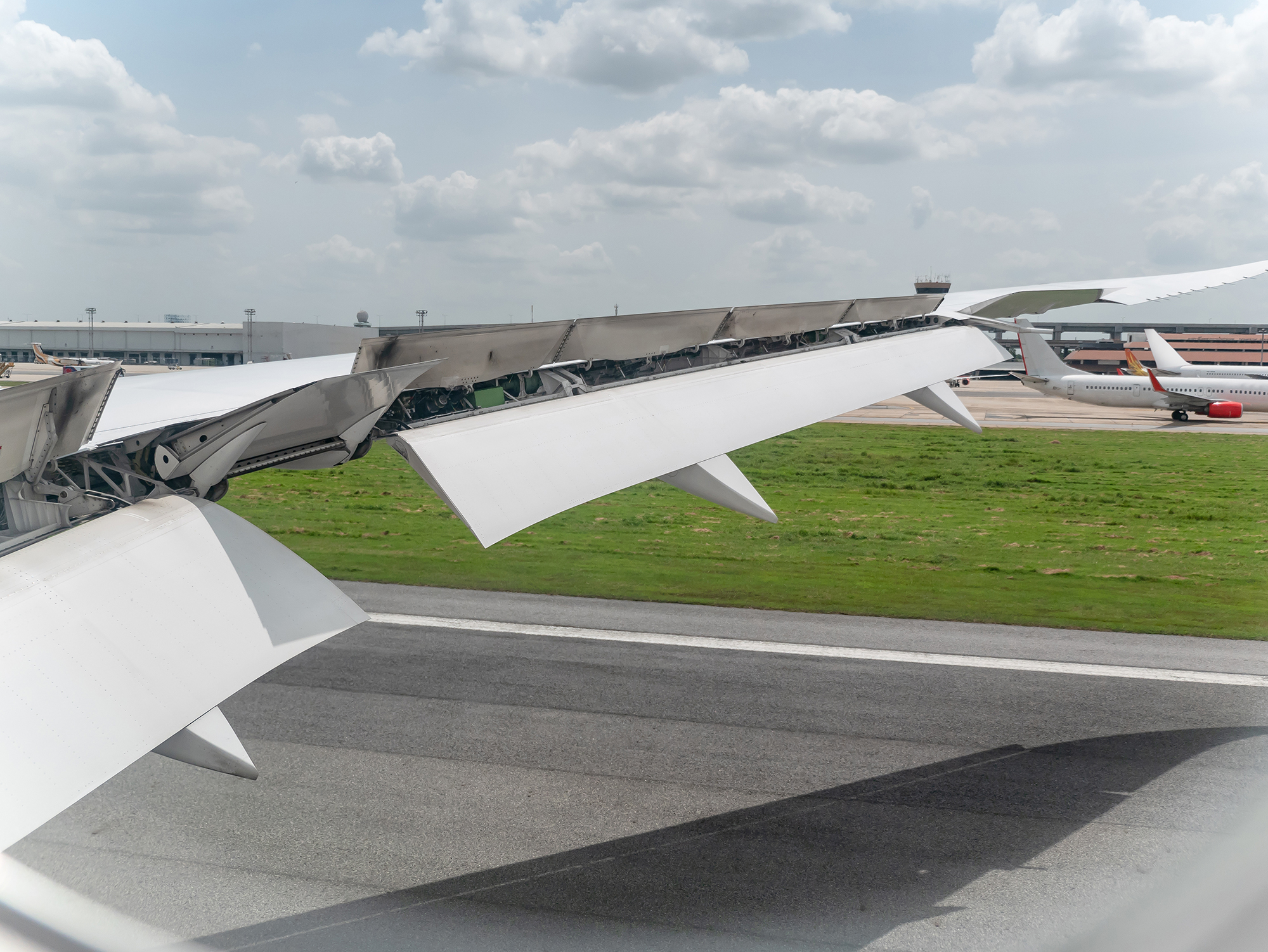
You’ll often hear flaps referred to as ‘high lift devices’.
Flaps often have several different settings. These settings can be altered based on the phase of flight and desired flight characteristics. The larger stages of flap, often called ‘drag flap,’ are used to slow the aircraft down to final approach speed.
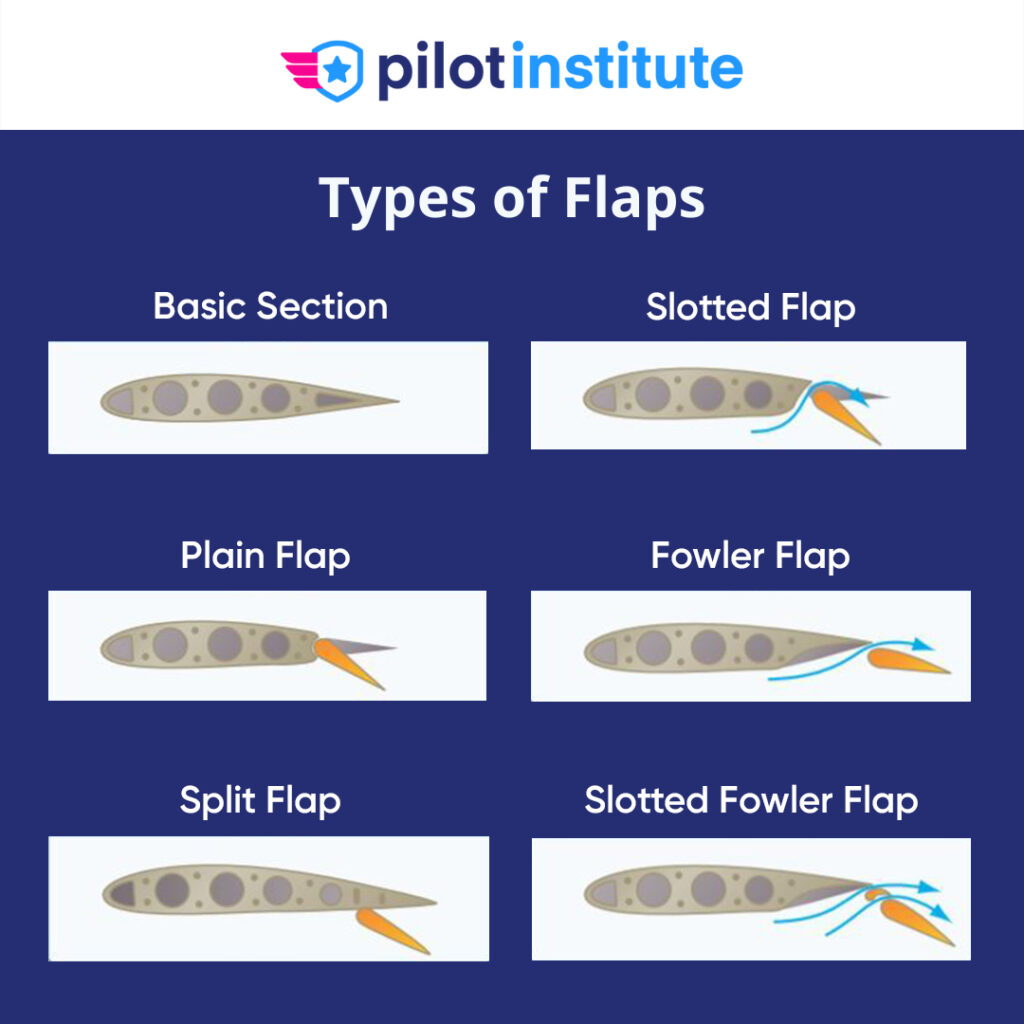
There are a few types of flaps you may encounter: –
- Plain Flaps – This flap is simple to construct and basic in operation. It is a simple hinge mechanism that you will tend to find on most light aircraft and training airplanes.
- Split Flaps – Split flaps are relatively rare. They don’t increase the size of the wing and merely change the chord line. About the only place, you’ll spot them nowadays is on vintage aircraft.
- Slotted Flaps – Slotted flaps feature on some smaller training aircraft and are also used on business jets. They increase wing camber, surface area and also delay airflow separation from the wing, producing more lift.
- Fowler Flaps – Commercial airliners all have Fowler flaps. These flaps are huge surfaces with several ‘slots’. They are mounted on rails or tracks (normally hidden within the fairing), allowing multiple stages to be selected. They are extremely efficient, but due to complex engineering are very
How Flaps Work
Flaps move symmetrically, reward and downwards. As a result, the surface area of the wing, as well as its camber, is increased. This means that the wing produces more lift, staying airborne at much slower speeds.
The flaps must move entirely symmetrically. If the flaps only moved on one wing, this would cause the aircraft to involuntarily roll as one wing would produce more lift than the other.
Slats
What are Slats?
Slats are also high lift devices. But, unlike flaps, they are located on the leading edge of the aircraft wing. Like flaps, slats move symmetrically and allow the aircraft to fly slower. Not all aircraft have slats, and you’ll usually find them on larger commercial aircraft.
How do Slats Work?
Slats work in a few different ways. Primarily, all slats increase the camber of the wing. With increased camber comes increased lift.
Some slats actually create a large gap in the wing’s leading edge. While you might not think a gap in the wing is a good thing, it actually makes the wing more efficient. The slot delays the airflow from detaching from the wing, producing lift for a lot longer!
This video is an old one, but when using smoke in a wind tunnel, you can clearly see this effect.
Final Thoughts
Wings are more than two flat panels sticking out of the side of the aircraft, there is a surprising number of parts of a wing, and each performs a vital task. The next time you fly, you’ll know what each part does and the effect it has. Want to learn more about airplane parts and principles of flight? Why not check out our free ultimate guide to becoming a pilot.
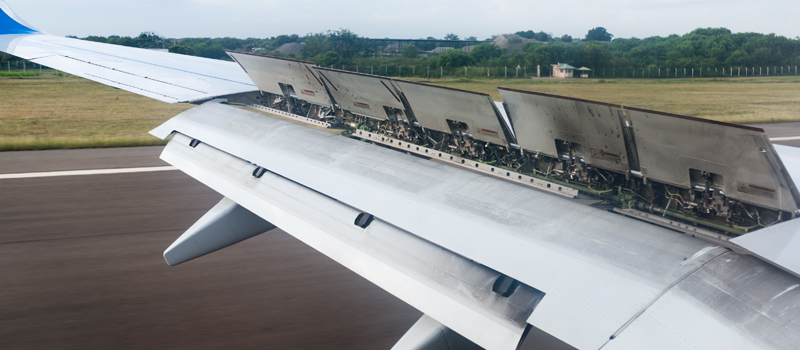
 @pilotinstituteairplanes
@pilotinstituteairplanes
